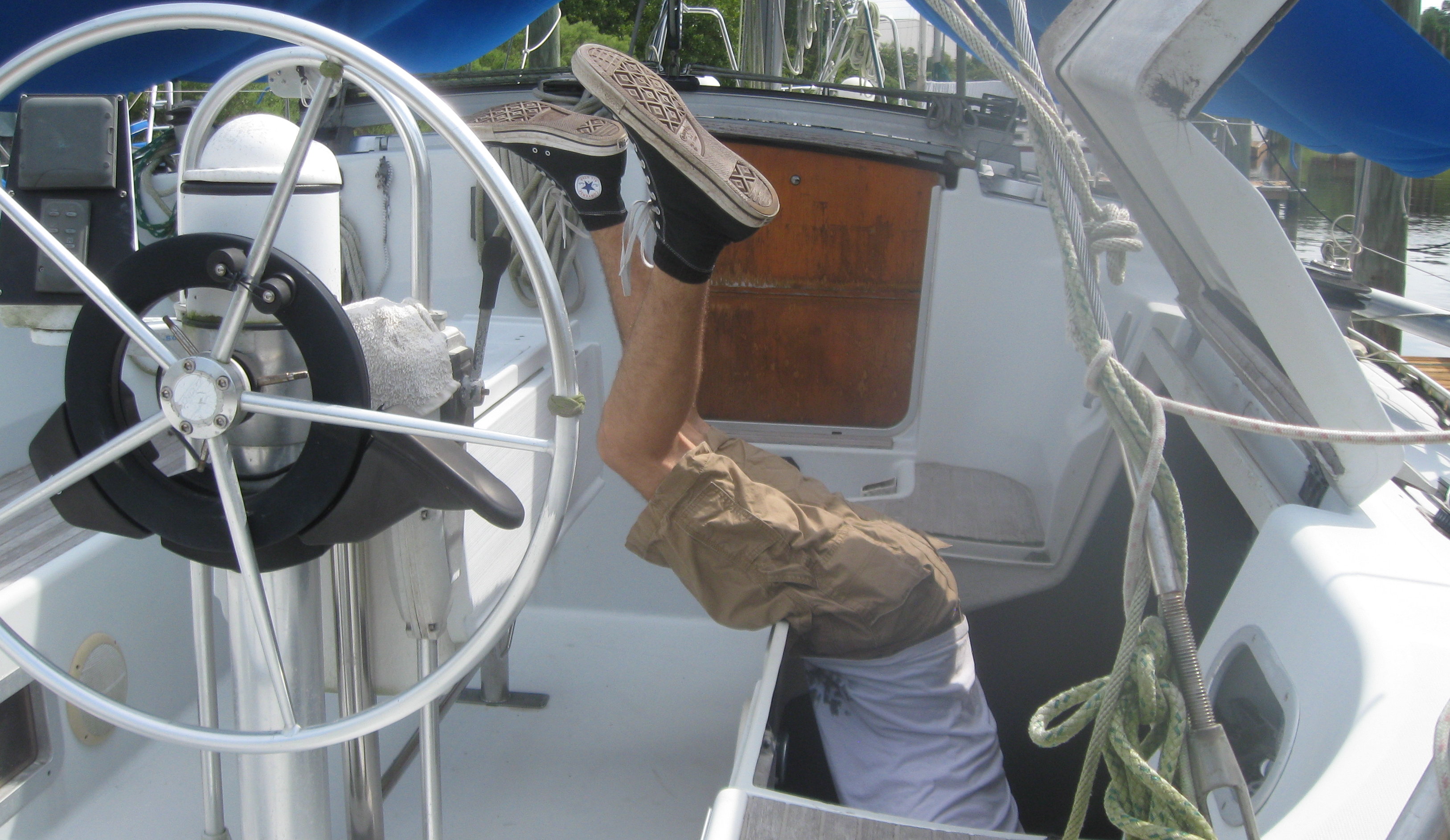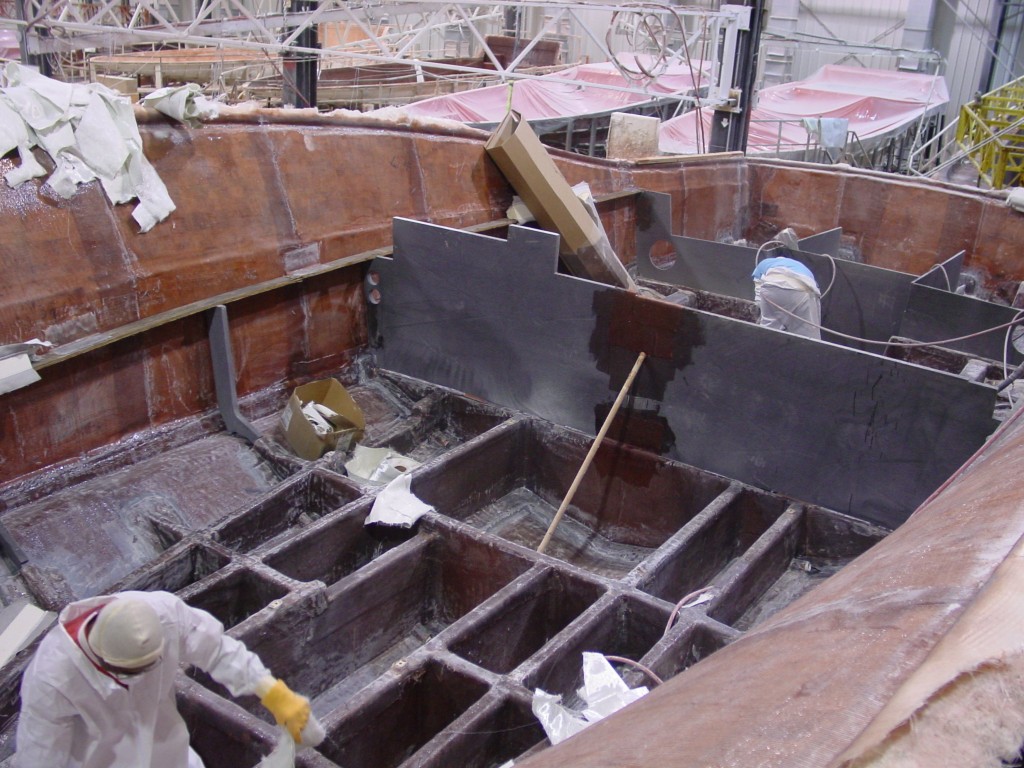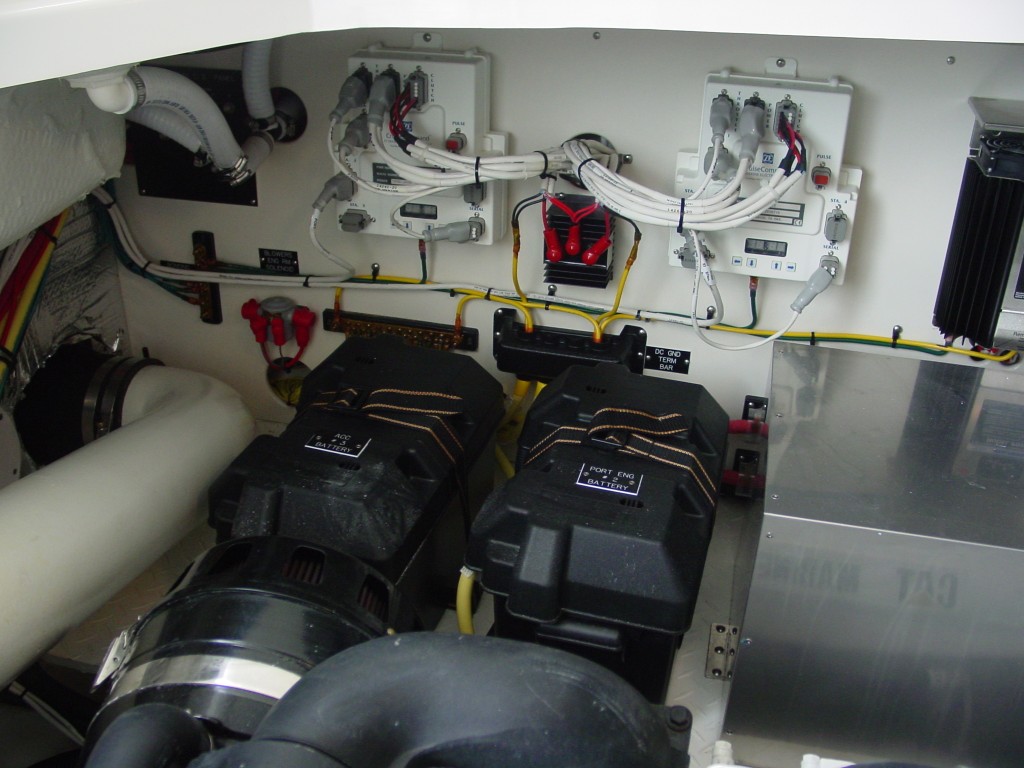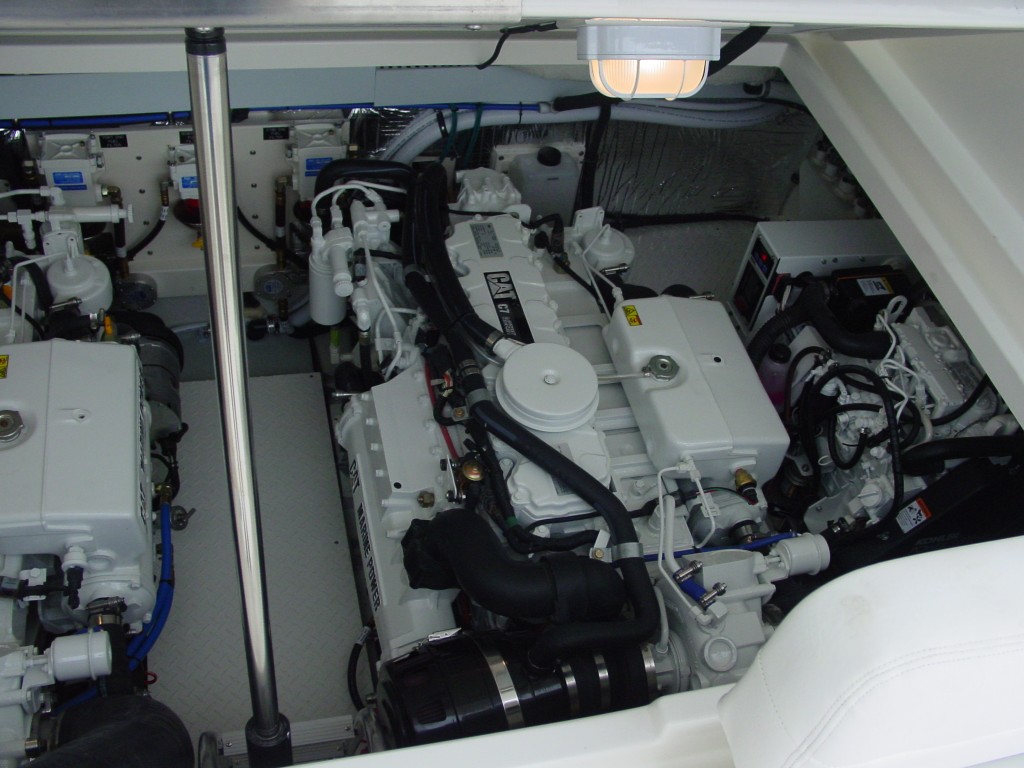All surveys are incomplete at best. This is because a surveyor has limited time and access on any given vessel. If a surveyor spent enough time to completely cover everything and open up all compartments the cost would be beyond what most would be willing to pay. Panels and cabinets would need to be disassembled and this is not something most owners would allow even if the buyer were willing to pay for it. For this reason most good surveyors try to reach a reasonable compromise. A good surveyor will strive to find major problems and things a perspective buyer may not notice on their own.
Not all surveyors do the same things in the same order but there are some basic things almost all will do. The following is a list of basic things every surveyor should do.
Check hull structure and condition inside and out. This would include checking for delamination (this is where they do the tapping thing.) Check moisture levels using a moisture meter. Moisture is something more likely to be found in a hull with a core but can appear in single skin hulls. The surveyor will also look for delamination or broken bonds inside the hull. The stingers, bulkheads and other structural supports will be checked for delamination, stress cracking and other problems as well.
The deck should be checked for structural issues as well. Almost all fiberglass decks are cored with either a foam or wood core material. This is done to provide stiffness and a solid feel under foot. Leaks from fittings can cause moisture penetration which if not corrected can lead to core rot and/or delamination. As with the hull, the surveyor will use a moisture meter along with acoustic testing (Tap out.) The hull/deck joint will also be inspected, although this can often be difficult as most builders do a good job of hiding the joint behind liners and cabinets.
Along with the hull and deck the vessels systems will be inspected. This will include electrical systems as well as fuel, exhaust, and steering systems. All these systems will be checked for basic compliance with ABYC (American Boat and Yacht Council) recommendations as well as USCG regulations. The electrical systems should be thoroughly checked with particular attention paid to aftermarket installations. Power sources such as batteries, shore power inlets and generators need to be checked for correct wiring as well. The bonding system will be checked for general condition and connections visually checked.. Exhaust and fuel systems will be checked for leaks and general condition of the hose. Rarely can fuel tanks be fully inspected but an effort will be made to inspect what is visible and check for signs of leaks.
The engine and mechanical systems will be checked as well. This is where some surveyors differ in what they will check. Some surveyors will do compression checks on gasoline engines and outboards. I personally do not. I feel that if indicators point to in depth testing this is best done by a qualified mechanic. A quick compression check alone will usually only point out larger problems that can often be found during water trials. A proper compression test should also include a bleed down test, or a test to see how long a cylinder will hold compression, this will tell much more than compression alone. Equally import is being able to pull a computer reading from the engine to verify run hours and get a history of faults and over revs. All this requires time and special equipment that is really beyond the scope of a normal survey. For this reason if engine hours or performance indicate a problem I normally refer my clients to a qualified mechanic to do the proper testing.
In water trials or sea trials are conducted during most pre purchase surveys but may not be done for insurance surveys. A water trial is where the surveyor along with the owner or broker will take the boat out to test the engines as well as other equipment that can only be fully tested while underway, such as autopilot and trim tabs. If no engine surveyor is aboard then hull surveyor will check the engines for proper operation and performance. Cruise and top RPM along with speeds will be checked against published specifications. The engines will be observed for leaks, vibrations or other unusual condition. Most surveyors will check engine and transmission temperatures with an IR thermometer as well. Any propeller or shaft vibration or run out is noted while running at different shaft RPMS. The steering and control systems will be checked for proper operation as well.
The out of water inspection will require lifting the boat for a full bottom inspection. I have sometimes been asked if I can bypass the out of water inspection to save money on hauling fees. Unless the buyer has full and recent knowledge of the underwater condition I strongly recommend checking the vessel out of the water. I have also been asked if I would dive on the boat or hire a diver to inspect the bottom. Once again this would not result in a thorough inspection and I personally will not dive a boat for inspection, I just do not think you can really see what the bottom and running gear look like while underwater. While out the thru hulls and other fittings will be checked for overall condition and signs of galvanic corrosion. The Struts propeller shafts and propellers will all be checked for signs of corrosion and other damage. The bottom will be carefully inspected for signs of blisters or previous repairs. The keel should be checked for signs of hard groundings and the tops sides or hull sides are checked for signs of impact damage or repairs. Sighting down the lines of the hull and rub rail can also give indications of previous damage and repairs.
For sailboats a rigging inspection will be done. Most of this can be done at deck level and the surveyor will look for corroded or cracked fittings. The chainplates and surrounding structure will be checked for signs of leaks or cracked tabbing. Fittings and supports related to the mast step and base will be checked. Any sagging or movement will be noted. The running rigging and hardware will be checked and problems noted. If the rigging is older or problems found at deck level a full aloft rigging inspection would be recommended. Surveyors who do this on a regular basis will have equipment to climb the mast unassisted.
USCG and safety checks should be done by all surveyors. All the life vests, flares, fire extinguishers and other emergency equipment are checked for proper working order and current inspection dates. This type of equipment is often over looked and not properly updated and certified by the owner.
Once the onboard inspections are complete the office work begins. Writing a report takes several hours even if the surveyor uses a canned format or software. Some research is required to check the results of the onboard findings with those published by the manufacture. Vessel valuation requires comparison with sales prices of like boats in like condition. All this is compiled into a report that is required for insurance and financing.
A survey is a statement of the vessels condition at the time the surveyor does the inspection. It is as complete as possible given the limited scope and time a surveyor has. Granted some surveyors are better than others and spend more time than others. A good surveyor can go through a boat in a systematic method, being as efficient as possible, to cover as much as possible. Most surveyors develop an eye for spotting trouble areas, they learn to sight small inconsistencies others may over look. That said no survey is perfect and the goal is not to catch every little problem but rather focus on those problems that will lead to bigger or expensive problems. A good survey will be valuable in keeping the vessel safe, seaworthy and in good condition.
Capt. Wayne Canning, AMS



